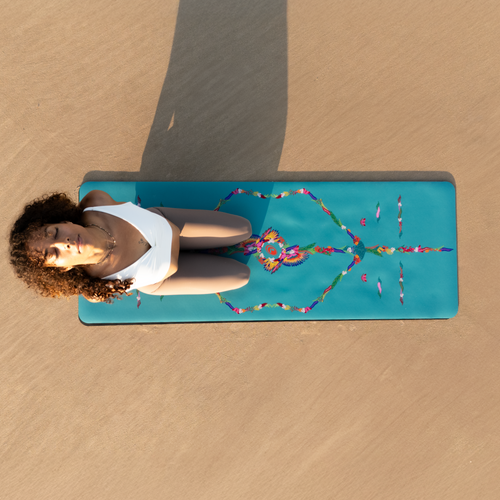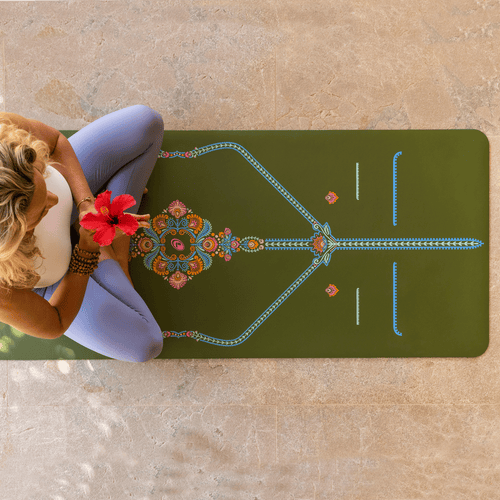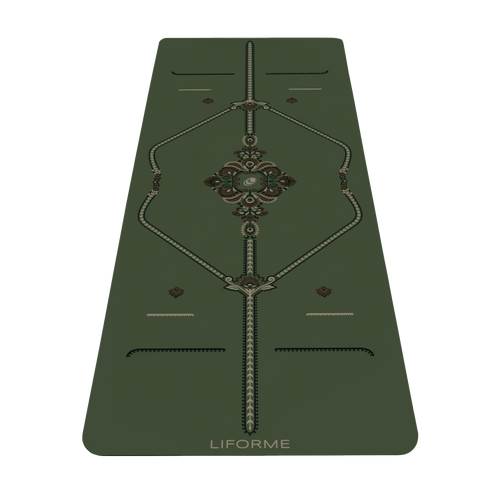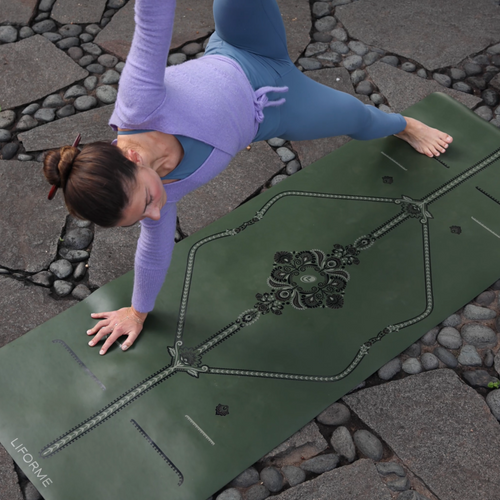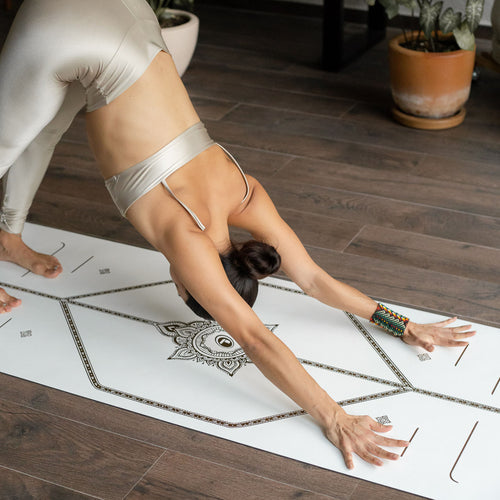As a standing balance posture, Warrior III works your core and legs while bringing your attention to your hip alignment. It may look like you’re going for height in your lifted leg in this posture, but don’t fall into the “higher is better” trap! It’s more important to keep your pelvis level and facing forward, even if it means dropping your leg a little (or a lot).
Step-by-Step Instructions for Warrior III
- Begin in a High Lunge position with your right leg forward.
- Place your hands on your hips. Make sure both your hip points are facing forward.
- Lean your torso forward diagonally as you push into your left foot to lift it off the floor and take your pelvis over your right foot.
- Keep a slight bend in your right knee as you bring your torso and left leg parallel to the floor.
- Check again that your hips remain square and facing forward.
- Flex strongly into your left foot with your left toes pointing straight down at the floor.
- Extend your arms forward, parallel to the floor with your fingers pointing toward the front of the room.
- Keep your neck long and your gaze on the floor.
🧘 Tip from a Yogi
Although you’d think that it would make sense to move through the Warrior poses in numerical order, Warrior III flows more naturally from Warrior I because they share the same forward-facing pelvic alignment, whereas in Warrior II the pelvis faces the side. That’s why our Warrior Flow Sequence takes things out of numerical order.
Warrior III Basics
Sanskrit Meaning: Virabhadra (Hindu Warrior) Asana (Pose)
Yoga Level: Intermediate
Pose Type: Standing balance
Pose Category: Balance, strength
Benefits of Warrior III
- Builds strength in legs, feet, and core
- Enhances balance and coordination
- Improves body awareness
- Increases stamina and mental concentration
Key Alignment Cues
-
Hips Square
In every standing pose, your pelvis is either facing the front of the mat, as in Mountain Pose, or the side of the mat, as in Warrior II. Warrior III is a forward-facing, Mountain Pose orientation of the pelvis.
For more info and helpful body awareness exercises, read ourClosed Vs. Open Hips Guide. -
Don’t Lock Your Knee
Keep a slight bend in your knee on your standing leg for better balance. -
Activate Your Foot
Keep your lifted leg engaged by flexing your foot.
Beginners’ Tips for Virabhadrasana III
- It’s okay if your back leg isn’t parallel to the floor. Prioritise keeping your pelvis in a forward-facing position. Opening your hip will let you lift your leg higher, but that isn’t the aim of Warrior III.
- Experiment with different arm positions. Your arms can wing backwards or you can bring your hands to Anjali Mudra at your sternum.
- Practice this pose with your lifted foot on a wall to get a feel for the hip alignment.
Preparatory Pose

Warrior I (Virabhadrasana I)
A standing pose with forward-facing hips to prepare for Warrior III.
Counter Pose

Standing Forward Fold (Uttanasana)
A gentle forward fold to release the hamstrings and calm the nervous system after balancing.
Why We Practice Warrior III
We practise this pose for the balance challenge of aligning your hips while standing on one leg. Poses that take us out of our regular movement habits promote the neuroplasticity that allows us to grow and adapt. Warrior III also helps to develop body awareness as you learn to sense where your body is in space and how to adjust your alignment.
Warrior III FAQs
How do I keep my hips square in Warrior III?
Put your hands on your hips to feel if they are level. Often, the hip of your lifted leg will be a bit higher. Bend your standing knee slightly and rotate your lifted hip toward the floor.
What if I can’t balance well in Warrior III?
Use a wall or blocks under your hands for support. Keep practising balancing poses to improve your core strength.
How did Warrior III get its name?
Warrior III, or Virabhadrasana III, is named after Virabhadra, a fierce warrior created by the Hindu god Shiva. The pose embodies Virabhadra’s strength, courage, and focus, inspiring practitioners to cultivate those qualities through balance and determination.
How do you coordinate breath with movement in Warrior III?
Use your inhales to lengthen your spine and lift your torso and legs, and exhale as you engage your core and stabilise your balance. Maintaining smooth, steady breathing helps keep focus and calm throughout the pose.













